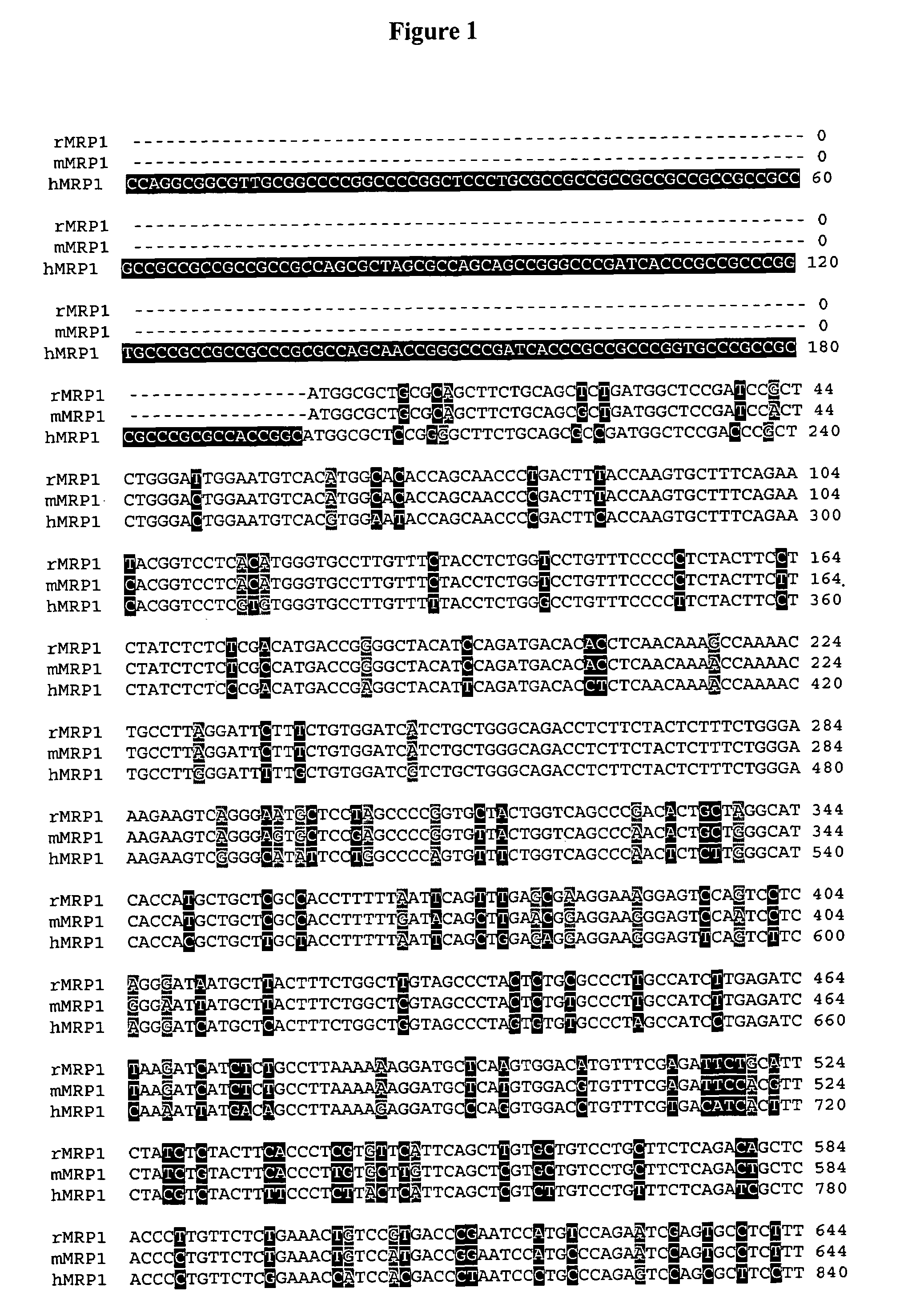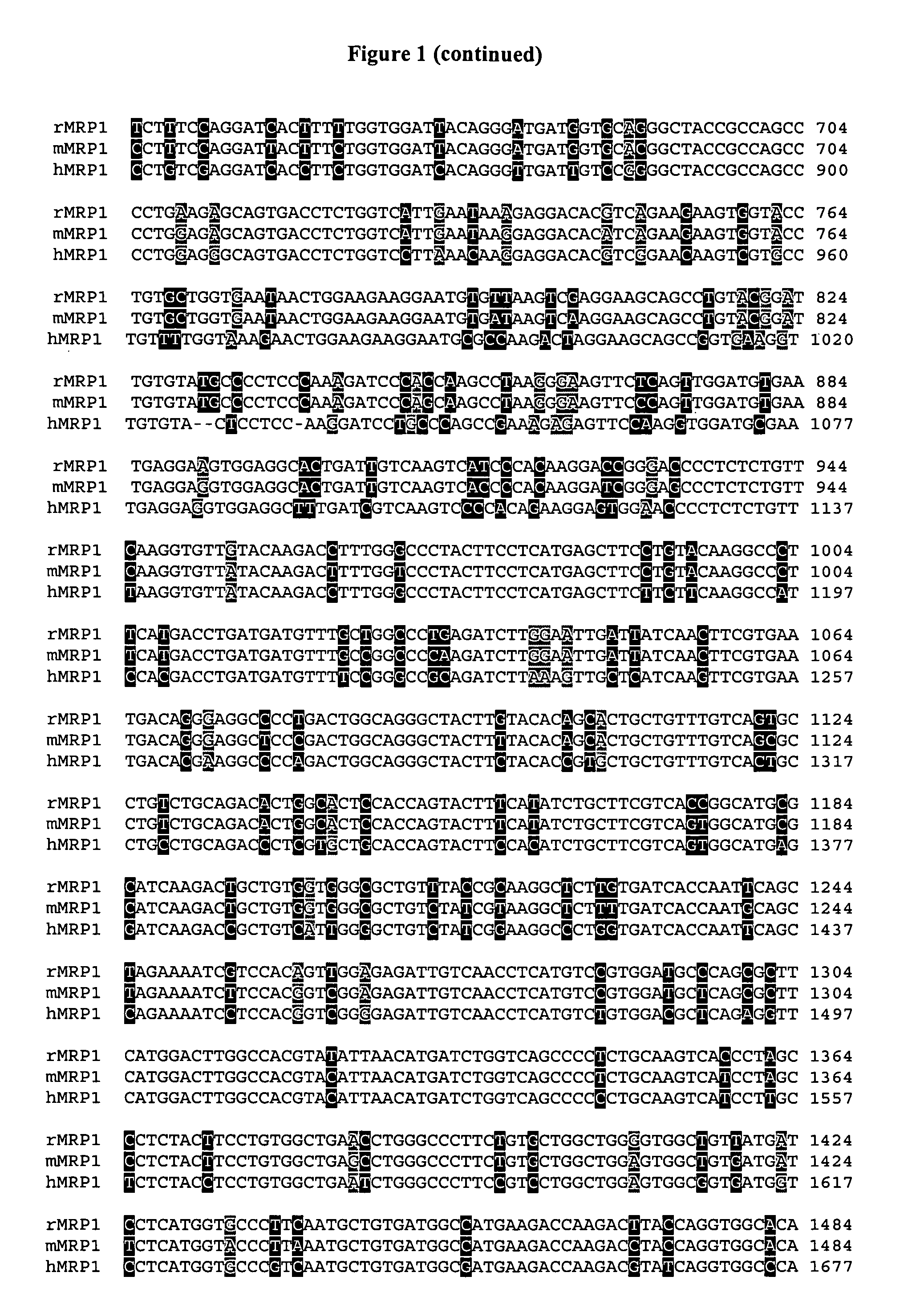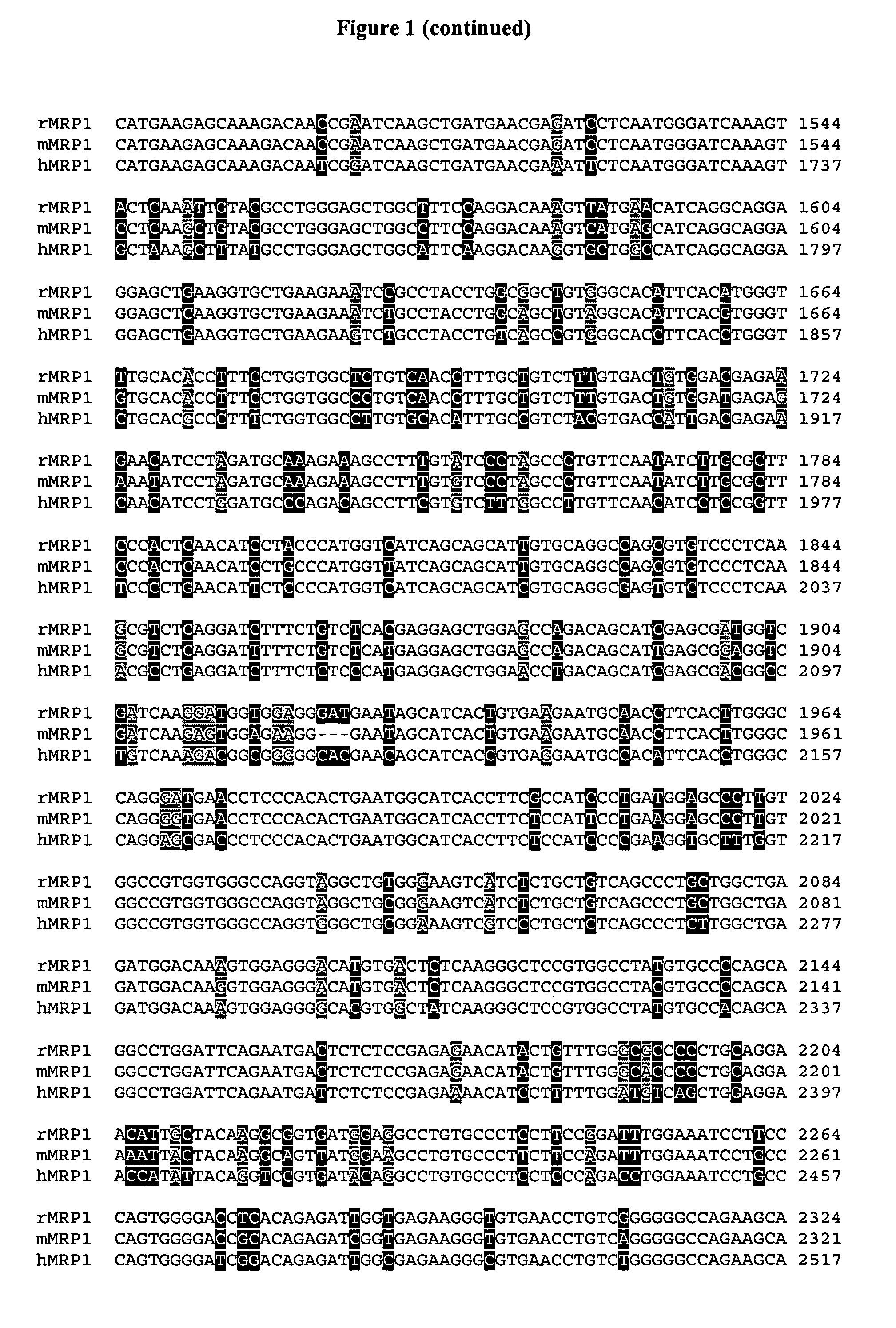Sequence variants of multi-drug resistance genes, MDR1 and MRP1, and methods for assessment of drug penetration and disposition
a multi-drug resistance gene and sequence variant technology, applied in the field of sequence variants of multi-drug resistance genes, mdr1 and mrp1, and methods for assessing drug penetration and disposition, can solve the problems of insufficient understanding of the role of p-glycoprotein in drug disposition, inability to fully understand the actual biophysical mechanism of solute translocation, and poor prognosis of cancer patients. to achieve the effect of increasing the responsiveness to drugs
- Summary
- Abstract
- Description
- Claims
- Application Information
AI Technical Summary
Problems solved by technology
Method used
Image
Examples
example 1
Impact of G1199A on Pgp-mediated Efflux Transport Activity
[0128]In this example, the significance of the MDR1 G1199A polymorphism, resulting in a Ser400Asn modification in P-glycoprotein is elucidated. Stable recombinant LLC-PK1 epithelial cells expressing either MDR1wt or MDR11199 have been developed to evaluate functional consequences of G1199A. Comparable expression of mRNA and protein in the MDR1-expressed cells and correct localization of P-glycoprotein in the apical membrane of recombinant cells was verified. The efflux transport of Rhodamine-123 in MDR11199 cells was approximately 4.5-fold lower than efflux in MDR1wt cells. Cytotoxicity studies have shown that MDR1wt and MDR11199 cells exhibited similar resistance to doxorubicin; however, MDR11199 cells were more resistant to vinblastine and vincristine. The apparent transepithelial permeability ratios of R123 in MDR1wt and MDR11199 cells were 3.54±0.94 and 2.02±0.51 (p<0.05), respectively. Therefore, the G1199A polymorphism ...
example 2
Impact of G1199T on Pgp-mediated Drug Resistance
Methods
[0160]Cell Culture
[0161]Human embryonic kidney cell, HEK293 cells (with or without Pgp expression) were grown at 37° C. in complete media consisting of DMEM medium (Invitrogen, Carlsbad, Calif.) supplemented with 10% (v / v) fetal calf serum and 1% (v / v) antibiotic-antimycotic, 1% non-essential amino acid, and under 5% CO2.
Generation of MDR1wt and MDR11199 Plasmids
[0162]Total RNA was extracted from the MDR1-overexpressing cell line, MES-SA-DX5 and full-length MDR1 cDNA was generated using the high-fidelity protocol developed previously (Yang et al., Biotech. 33:196, 8, 200 passim. (2002)). The isolated MDR1 cDNA was cloned into a linearized pcDNA-TA vector (Invitrogen, Carlsbad, Calif.) containing cytomegalovirus (CMV) and T7 promoters capable of transcription also described previously (Yang et al., supra.). The plasmid stock was designated as MDR1wild-type (MDR1wt).
[0163]The mammalian expression plasmid containing the G1199A or G...
example 3
Impact of MDR1 G1199A Polymorphism on Absorption of HIV Protease Inhibitors Across Epithelial Cells
[0191]The standard of care for HIV therapy, known as highly active antiretroviral therapy (HAART), utilizes a combination of drugs that attack the virus through different mechanisms of action. HAART combines the use of reverse transcriptase (RT) inhibitors, either nucleoside or nonnucleoside analogues and protease inhibitors, each targeting different mechanisms of the life cycle of HIV. The RT inhibitors, such as AZT, ddC, ddI, d4T, and 3TC, interfere with the reverse transcription of viral RNA. Protease inhibitors, such as amprenavir, indinavir, lopinavir, nelfinavir, ritonavir, and saquinavir, block the HIV protease cleavage of precursor proteins into unites necessary for construction of new mature virions. Clinically, oral HAART decreases plasma viral load to undetectable levels over long-term chronic therapy, indicating it is effective in controlling viral replication (see Hammer e...
PUM
| Property | Measurement | Unit |
|---|---|---|
| time | aaaaa | aaaaa |
| temperature | aaaaa | aaaaa |
| Tm | aaaaa | aaaaa |
Abstract
Description
Claims
Application Information
 Login to View More
Login to View More - R&D
- Intellectual Property
- Life Sciences
- Materials
- Tech Scout
- Unparalleled Data Quality
- Higher Quality Content
- 60% Fewer Hallucinations
Browse by: Latest US Patents, China's latest patents, Technical Efficacy Thesaurus, Application Domain, Technology Topic, Popular Technical Reports.
© 2025 PatSnap. All rights reserved.Legal|Privacy policy|Modern Slavery Act Transparency Statement|Sitemap|About US| Contact US: help@patsnap.com



